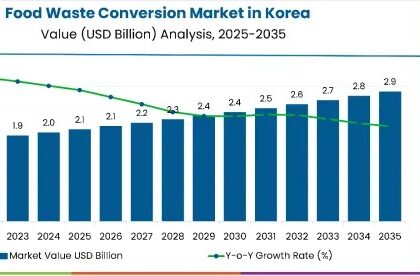Consumer awareness about tahini’s low-caloric properties has made it a preferred ingredient in sweet/savoury spreads and according to a new research report by Future Market Insights (FMI), the tahini market in Middle East and Mediterranean region will be worth US$ 1,081.7 Mn.
The demand for packaged, ready-to-eat, and processed foods has increased, which has given the tahini market a boost. One of the main factors influencing tahini’s demand in the food processing sector is that it has minimal calories and is preservative-free.
Uncover the Tahini Market Insights! Get Your Free Sample Report Now and Dive into Middle East and Mediterranean Trends :
https://www.futuremarketinsights.com/reports/sample/rep-ma-560
Future Market Insights claims that advancements in food processing technologies are boosting production capacity and making it easier for manufacturers to meet future demand.
According to FMI’s survey of the Middle Eastern and Mediterranean tahini market, manufacturers’ top concern is the fluctuation in the price of sesame seeds. Because pulverised sesame seeds are used to make tahini, any change in their price affects the makers’ profit margin. According to the survey, political upheaval in the Middle East may potentially have an effect on the expansion of the tahini market.
Tahini’s widespread appeal is hindered by the accessibility and affordability of paste and spread alternatives such jam, marmalades, peanut butter, mayonnaise, and other table sauces. The Middle East and Mediterranean tahini market’s growth will be moderately impacted, according to FMI’s assessment.
According to a Future Market Insights end-user survey, tahini is most popular in sweet/savory/spread foods including hummus, falafel sauces and sweet tahini molasses. Tahini extraction made up 59.3% of the whole sesame market, according to the FMI end-user study. Tahini distributors reported that 50% of tahini is consumed through sweet or savoury goods, compared to 45.5% according to tahini makers. According to the answers, tahini is least frequently used in baking and confectionary products. Tahini is mostly used in households and by downstream sectors, according to the respondents. According to the respondents, these two sectors account for almost 80% of end use.
On the basis of product type, Future Market Insights has segmented the Middle East and Mediterranean tahini market into paste & spreads, halve & other sweets, and sauces/dips. Paste & spreads is the most dominant segment among these, and accounted for 52.6% share of the overall product type category in 2014. Halve & other sweets’ market share was 36.8% in 2014 and FMI estimates it to drop to 34.2% in 2020.
On the basis of distribution channel, the Middle East and Mediterranean tahini market is segmented into modern retail, conventional retail, exports, and HORECA. FMI’s analysis revealed that conventional retail is the most dominant segment and it will continue to remain the preferred distribution channel through 2020.
On the basis of regions, the Middle East and Mediterranean tahini market is segmented into Middle East excluding GCC (Turkey, Israel, and Lebanon), North Africa (includes Egypt), GCC, and Mediterranean Europe (France, Spain, Italy and Greece). Among these, Middle East excluding GCC is the most lucrative region and FMI estimates it to account for a market share of 44.5% in 2020.
Explore Tahini Delights! Unveil Flavors through Middle East and Mediterranean Segments – Buy Now for an Exquisite Culinary Journey :
https://www.futuremarketinsights.com/checkout/560
Key companies profiled in the report include:
- Halwani Bros Co.
- Tema:
- National Confectionary & Tahina Factory Co. Ltd
- El Rashidi El Mizan
- Al Wadi Al Akhdar
- Haitoglou Bros S.A.
- Prince Tahina Ltd.
- J.M Food Industries Ltd. and Gesas General Foods Co. Inc.
Tahini Market Key Segment
By Product Type
- Paste & Spreads
- Halva & Other Sweets
- Sauces/Dips
By Region
- Middle East Excluding GCC
- North Africa
- GCC (Gulf Cooperation Council)
- Mediterranean Europe
Most of the major players are based in Middle East and they are adopting various go-to-market strategies to expand their market share in this growing Tahini market. FMI’s analysis revealed that these key companies are raising brand awareness about their products by exhibiting their offerings at various international food expos and by rolling out novel and attractive products for various demographics.
About FMI
Future Market Insights (ESOMAR certified market research organization and a member of Greater New York Chamber of Commerce) provides in-depth insights into governing factors elevating the demand in the market. It discloses opportunities that will favor the market growth in various segments on the basis of Source, Application, Sales Channel and End Use over the years.
Contact Us:
Unit No: 1602-006
Jumeirah Bay 2
Plot No: JLT-PH2-X2A
Jumeirah Lakes Towers,
Dubai
United Arab Emirates
For Sales Queries: sales@futuremarketinsights.com
Browse All Report: https://www.futuremarketinsights.com/reports






